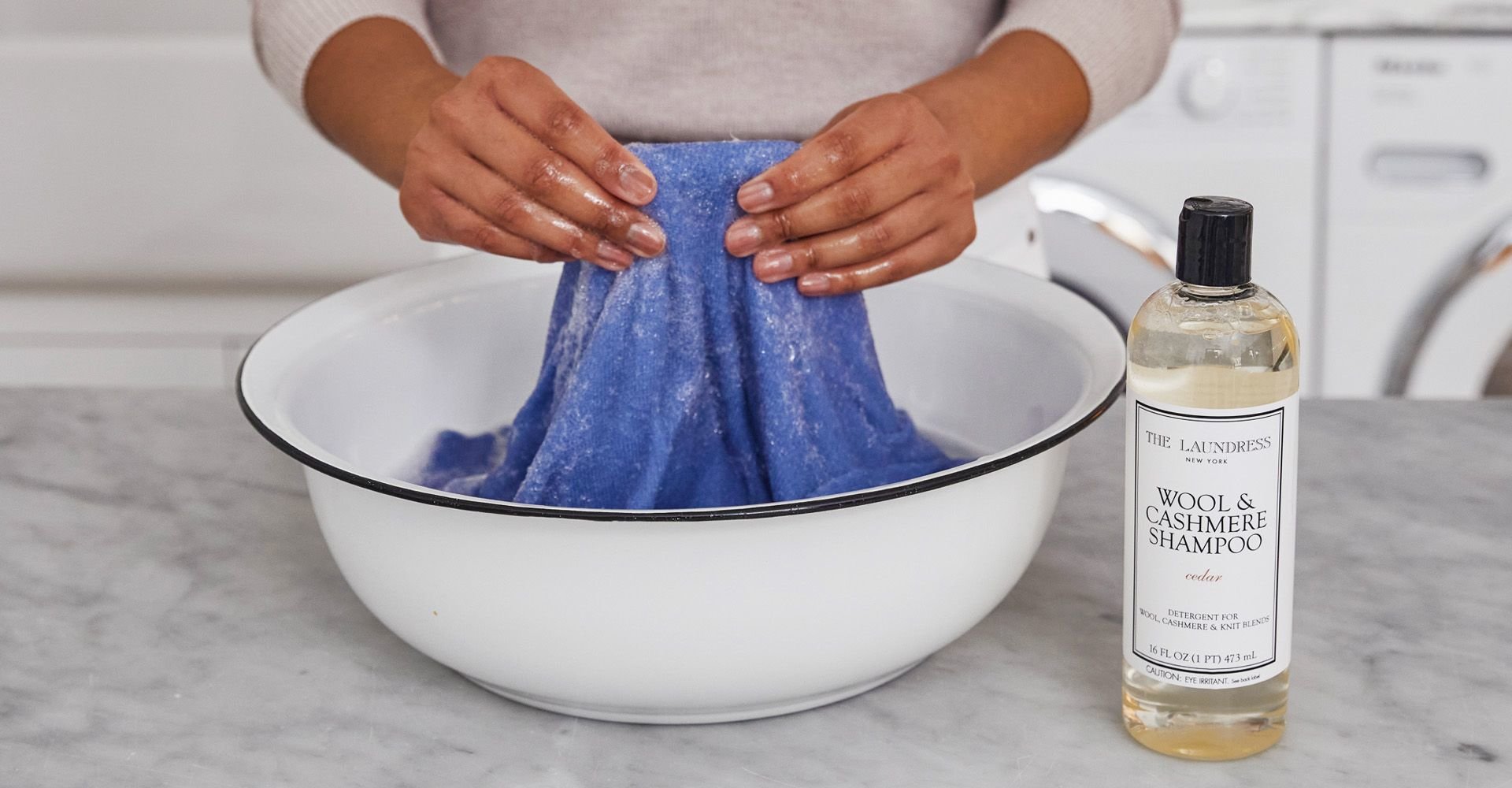Hand washing is the safest and gentlest way to wash delicate fabrics and woolens, but also everyday fabrics, like cotton and linen. When you hand wash, you have more control throughout the cleansing process, so you can ensure clothes are cleaned exactly how you want. During hand washing, your clothing is also subject to less agitation (like from the machine's spin cycle), so it's easier on garments. When it comes to water temperature, you'll have greater control over hand washing at cool, tepid, warm, or hot temperatures. When you don’t have access to a washer and dryer or just feel like taking extra special care of your favorite possessions, here’s everything you need to know about how to handwash at home.
Step 1: Group
Just as you would while doing laundry in a washing machine, separate your items by color and fabric type. Create a pile of your woolens like wool, cashmere, and merino, delicate items, and everyday clothing and linens, then further separate colors from whites. Any garment that's been heavily stained or temporarily dyed should be pretreated and washed alone, as color transfer can occur more easily in smaller wash spaces.
Step 2: Pretreat
Tackle stains as needed using a stain pretreatment appropriate for your fabric. We love our Stain Solution for washable fabrics (cotton/cotton-poly, etc.). Work the formula into the stain with a finger or a Stain Brush. For tough stains, allow the item to soak in a sink, bath tub, or basin for 30 minutes.

Step 3: Wash
Depending how big of a laundry load you have, you can wash your items in a bath tub, sink, or basin! If washing in a sink or tub, be sure to clean first to remove any residue. Take note: avoid using bleach-based cleaners on hand washing surfaces immediately prior to hand washing. This can cause bleach to transfer to your clothes, which can result in irreversible color pull. Next, add your detergent according to fabric type. We recommend Wool & Cashmere Shampoo for knits, sweaters, and woolens, and our Delicate Wash for delicate items like hosiery, lingerie, eveningwear, and blouses. Both of these formulas are enzyme-free and optimized for handwashing in cool temperatures. You can adjust the amounts according to your load size (refer to the back of the detergent’s bottle) but make sure you’re using the right amount—too little could leave lingering scents or stains, and too much can become difficult to rinse out.
Step 4: Rinse
Run cool water through items until the rinse water is no longer soapy. Avoid wringing, which can alter the shape of the item (eek!). Instead, press the water out of the fabric by pushing it between your hands or against the edge of the wash basin or sink. If you notice color or traces of dye in the water, don’t worry. This is normal and it's simply the fabric or yarn releasing color.

Step 5: Dry
Lay the items flat in their natural shapes on a hard surface or on a drying rack. Unlike hanging, this is best for preventing stretching. Keep fabrics (especially woolens) away from heat sources like radiators or direct sunlight to prevent shrinkage.
Step 6: Refresh
In between hand washes, give items a light steam mist with your fabric freshening spray of choice.








